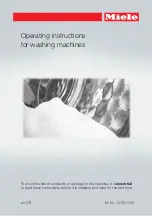
– 13 –
Adjustment procedures
Results of Improper adjustment
1) Returning amount of the double chain looper
Loosen clamping screw
❷
of double chain lopper driving arm
❶
to make this adjustment.
2) Longitudinal motion (Avoid motion)
1. Open the rear cover
❻
of the sewing machine.
2. Loosen the screw
❽
slightly.
3. Turn the eccentric pin
❼
to make adjustment.
To increase the longitudinal motion
A
, turn the eccentric pin
❼
to
⊕
direction.
To decrease the longitudinal motion
A
, turn the eccentric pin
❼
to
⊖
direction.
(Caution) Depending on the initial direction of the eccentric pin
❼
, the adjustment direction becomes opposite.
<Distance between eccentric pin
❼
and screw
❽
>
When the distance is minimum :
The longitudinal motion
A
becomes maximum. To
whichever direction you turn, the longitudinal mo-
tion
A
decreases.
When the distance is maximum :
The longitudinal motion
A
becomes minimum. To
whichever direction you turn, the longitudinal mo-
tion
A
increases.
4. Tighten the screw
❽
after the adjustment.
5. At the end of the adjustment, close the rear cover
❻
.
3) Clearance between the double chain looper and the needle
1. Loosen clamping screw
❷
of double chain lopper driving arm
❶
.
2. Turn fine-adjustment screw
❺
to adjust the clearance by moving
double chain lopper driving arm
❶
back and forth.
Adjust so that the clearance of 0 ± 0.05 mm is provided between
crest
B
of the lower end of scarf of double chainstitch needle
❹
and double chain looper
❸
.
At this time, the tip of double chain looper
❸
should be located
inside the side face of double chainstitch needle
❹
.
o
Excessive returning amount
of the double chain looper will
cause frequent stitch skipping
when filament thread is used.
o
Insufficient returning amount
of the double chain looper will
cause frequent needle thread
stitch skipping when a spun
thread is used.
o
If the avoid motion is too large,
triangle stitch skipping will often
occur.
Bad needle
entry
Good needle
entry
o
Insufficient avoid motion will
cause the needle tip to hit the
looper, producing scratches on
the needle tip or looper.
o
Excessive clearance will cause
frequent needle thread stitch
skipping.
o
Insufficient clearance will cause
to looper to hit the needle,
leading to needle breakage or
scratches on the blade point of
looper with consequent needle
thread breakage.
















































